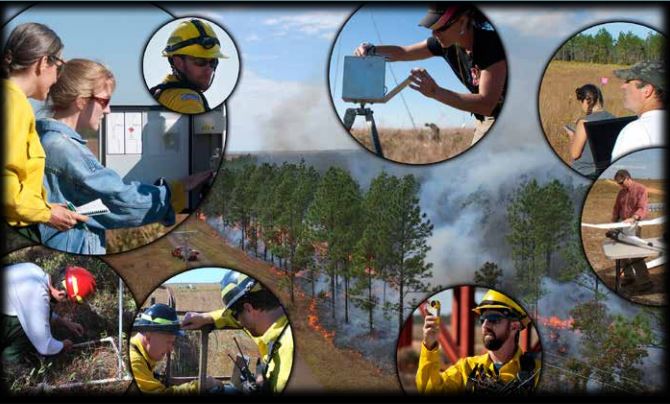
“Fire science is not rocket science—it’s way more complicated.”
That quote comes from research ecologist Matt Dickinson of the U.S. Forest Service’s Northern Research Station who borrowed it from Robert Essenhigh, Professor Emeritus, Mechanical and Aerospace Engineering, Ohio State University. Mr. Dickinson was one of 36 researchers who collected data over a two week period during a series of extensively instrumented prescribed fires at Eglin Air Force Base in the Florida Panhandle last year.
The Joint Fire Science Program organized and helped fund the project, called RxCADRE, which collected 10 terabytes of data using many, many ground based sensors and four orbiting aircraft. Their goal was to obtain a comprehensive dataset of fire behavior, fire effects, and smoke chemistry, using measurements taken systematically at multiple, cascading scales. The information will help scientists and fire modelers test their models and develop better ones, ultimately making them more reliable.
Part of the project included hiring a writer to produce a 12-page overview of their work. It provides a great deal of information about how they planned and conducted the field work, and is for the most part well-written and worth reading, but occasionally lapses into flowery language for the sake of … flowery language.
For example,
36 scientists watch as fire’s ancient energy is captured, photographed, mapped, sensed, counted, measured, weighed, and rendered into data.
and,
The fire catches, wavers, and bellies gently before the wind. It spreads unevenly, then comes together, licking the grasses.
The Joint Fire Science Program deserves kudos for organizing this important research and for arranging to produce the 12-page overview.
